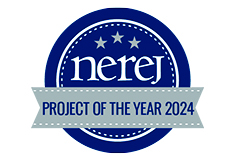News: Spotlights
Posted: January 26, 2012
Building moisture - it is not just a problem that exists in humid climates
Problems associated with moisture in occupied buildings are typically considered a hot and humid weather condition. Ironically, cold weather conditions in buildings, especially those with a heavy occupant load, can create or contribute to indoor moisture problems for managers and engineers. Moisture intrusion falls into two categories in most situations: acute flooding-related moisture and chronic bound moisture from less obvious causes. If left unaddressed or improperly addressed, both situations can lead to troublesome comfort and health problems and potential material damage.
Flooding related damage during cold weather often is the result of frozen or burst pipes or water mains. The recent cold snap this month resulted in dozens of pipe freezes and disrupting floods. Frequently, in the rush to resume normal operations, managers may opt for a quick clean up without taking the time for a full moisture intrusion survey. Once a situation looks visibly normal, the air feels "dry" and occupants return to their routine, there is little incentive to identify less obvious moisture. This moisture can be "bound" in the interstitial spaces behind finished surfaces or non-permeable materials and goes undetected - until there is an unpleasant odor. At this point, what was previously a challenging drying opportunity has become a more complex and expensive mold remediation project.
Typically, heated air has a low relative humidity at the source and throughout the distribution system. However, the use and occupancy of a building can contribute large amounts of moisture from various sources, not least of which are the people. Cooking, bathing, cleaning and other processes also contribute a significant amount of moisture. Since warm air is capable of holding more moisture than cold air, a building can carry a great deal of moisture throughout the space until it finds a cold surface such as poorly insulated windows or outside walls, poorly heated utility and storage spaces or highly porous materials. When moist air meets a cold surface, its presence is known as "water activity" and is a measurement of moisture available to be absorbed into a surface material. If the surface material is one that will support fungal growth, mold can develop without any visible indication of water or flooding.
Careful assessment with proper instrumentation after flooding and regular monitoring of indoor air quality conditions can prevent or detect moisture problems before they proliferate into potential complaints and expensive repairs. Consult a professional experienced in moisture intrusion, indoor air quality and fungal contamination if you discover a problem in your building.
Gerry McGonagle, CR, WLS, is the general manager of BELFOR Property Restoration, Hopkinton, Mass.
Tags:
Spotlights
MORE FROM Spotlights
The New England Real Estate Journal presents the First Annual Project of the Year Award! Vote today!
The New England Real Estate proud to showcase the remarkable projects that have graced the cover and center spread of NEREJ this year, all made possible by the collaboration of outstanding project teams. Now, it's time to recognize the top project of 2024, and we need your vote!

Quick Hits







